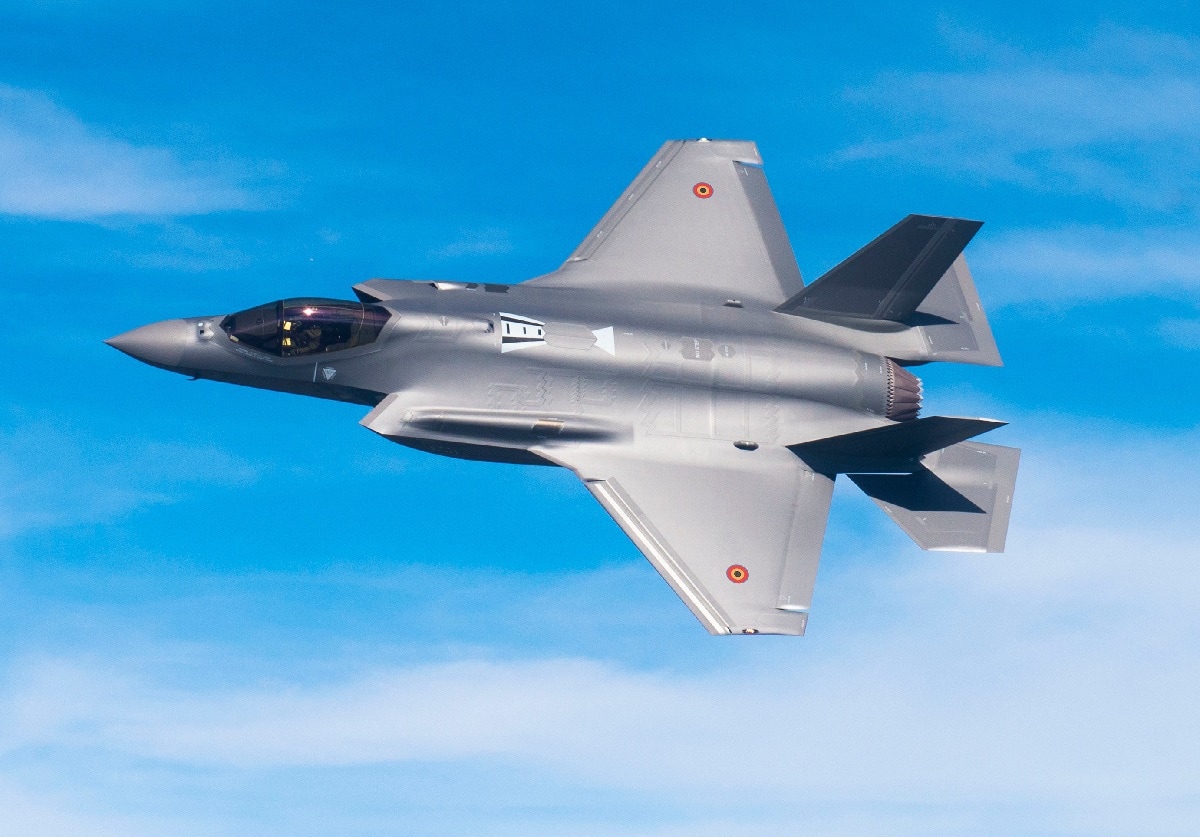The state-of-the-art Lockheed Martin F-35 Lightning II certainly has its detractors, but it is clear that officials in the Pentagon have full confidence in the capabilities of the fifth-generation stealth fighter.
On Tuesday, the F-35 Joint Program Office announced that it had awarded the Lockheed Martin (NYSE: LMT) industry team annualized contracts covering fiscal years 2021-2023 (FY21-23) to support operations and sustainment of the global F-35 fleet, as well as to support mission readiness and further reduce cost.
The annual contracts will fund critical sustainment activities for the F-35s currently in the fleet, while it will enable enterprise capacity to support the future fleet of more than 3,000 of the advanced aircraft. That will include industry sustainment experts supporting base and depot maintenance, pilot and maintainer training, and sustaining engineering for the U.S. and its allies across the globe.
The new contracts will further cover fleet-wide data analytics and supply chain management for part repair and replenishment to enhance overall supply availability for the fleet.
“Together with the F-35 Joint Program Office, we recognize the critical role the F-35 plays in supporting our customers’ global missions and the need to deliver this capability affordably,” said Bridget Lauderdale, Lockheed Martin vice president and general manager of the F-35 program.
Reduced Costs
This should further address concerns regarding the operating costs of the aircraft, which are shared between government and industry.
“These contracts represent more than a 30 percent reduction in cost per flying hour from the 2020 annualized contract, and exemplify the trusted partnership and commitment we share to reduce sustainment costs and increase availability for this unrivaled fifth generation weapon system,” added Lauderdale.
The company has already been successful at reducing flight hours by 44 percent in the past five years, while it has forecasted a reduction of an additional 40 percent in the next five years. The multinational defense contractor has also said that the cost savings in the 2021-23 annualized sustainment contracts support those efforts. The savings will be achieved through improved cost and velocity in its supply chain, as well as continued reliability improvements and greater manpower efficiencies to provide product support solutions across the growing, global fleet.
The contracts will also pave the way for a longer-term, Performance-Based Logistics (PBL) agreement for the F-35 program. PBLs are an industry best practice, and facilitate agile sustainment solutions for the fleet and incentivizing even further affordability and performance results.
Full Mission Simulators
Another advanced capability of the F-35 program is its use of the Full Mission Simulators (FMS), which allow pilots to accomplish single aircraft training as well as multi-ship mission rehearsal events. Before they ever climb into the cockpit of the Lightning II, F-35 pilots spend hours running simulated training exercises and practicing combat strategies on the ground.
This year, Lockheed Martin installed four of the F-35 FMS at Marine Corps Air Station (MCAS) in Miramar, California. As fifth-generation fighter tactics typically employ four or more aircraft working together to complete coordinated missions, the pilots training at Miramar have the ability to practice those tactics onsite using the four linked simulators. FMS capabilities can provide the Marines pilots with increased efficiency and more time to train.
That extra time gives the team more repetitions of mission sets at a significantly reduced cost and gives pilots additional time to train before executing in the F-35 aircraft. More time to train means greater safety when pilots are in the air.
“Being able to train with pilots in your squadron and execute tactics as a four ship has a ton of advantages,” said Maj. Derek Heinz, VMFA-314 Training Officer and Pilot.
Greater Capabilities
The Lockheed Martin F-35’s program data has noted that the aircraft’s reliability has continued to improve, while the jet is seen to be approximately twice as reliable as fourth-generation fighters.
“It also shows maintenance labor hours needed per flight hour are well within the contractual requirement, while the global fleet is averaging around 70% mission capable rates,” the company noted. “Lockheed Martin has significantly lowered its share of cost per flight hour over the last five years, and the broader F-35 team is working across government and industry to achieve greater affordability.”
To date, more than 690 aircraft have been delivered and are operating from 21 bases around the globe. Additionally, more than 1,460 pilots and 11,025 maintainers have been trained and the F-35 fleet has surpassed 430,000 cumulative flight hours.
Peter Suciu is a Michigan-based writer who has contributed to more than four dozen magazines, newspapers and websites. He regularly writes about military small arms, and is the author of several books on military headgear including A Gallery of Military Headdress, which is available on Amazon.com.

